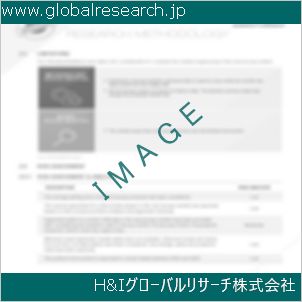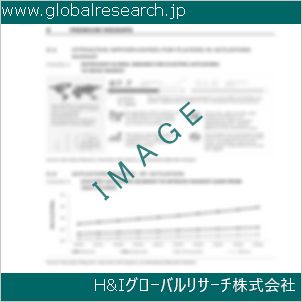Table of Contents
1 Industry Overview of Succinonitrile
1.1 Definition and Specifications of Succinonitrile
1.1.1 Definition of Succinonitrile
1.1.2 Specifications of Succinonitrile
1.2 Classification of Succinonitrile
1.3 Applications of Succinonitrile
1.3.1 Nuclear Application
1.3.2 Non-Nuclear Application
1.4 Industry Chain Structure of Succinonitrile
1.5 Industry Overview and Major Regions Status of Succinonitrile
1.5.1 Industry Overview of Succinonitrile
1.5.2 Global Major Regions Status of Succinonitrile
1.6 Industry Policy Analysis of Succinonitrile
1.7 Industry News Analysis of Succinonitrile
2 Manufacturing Cost Structure Analysis of Succinonitrile
2.1 Raw Material Suppliers and Price Analysis of Succinonitrile
2.2 Equipment Suppliers and Price Analysis of Succinonitrile
2.3 Labor Cost Analysis of Succinonitrile
2.4 Other Costs Analysis of Succinonitrile
2.5 Manufacturing Cost Structure Analysis of Succinonitrile
2.6 Manufacturing Process Analysis of Succinonitrile
3 Technical Data and Manufacturing Plants Analysis of Succinonitrile
3.1 Capacity and Commercial Production Date of Global Succinonitrile Major Manufacturers in 2023
3.2 Manufacturing Plants Distribution of Global Succinonitrile Major Manufacturers in 2023
3.3 R&D Status and Technology Source of Global Succinonitrile Major Manufacturers in 2023
3.4 Raw Materials Sources Analysis of Global Succinonitrile Major Manufacturers in 2023
4 Capacity, Production and Revenue Analysis of Succinonitrile by Regions, Types and Manufacturers
4.1 Global Capacity, Production and Revenue of Succinonitrile by Regions 2019-2024
4.2 Global and Major Regions Capacity, Production, Revenue and Growth Rate of Succinonitrile 2019-2024
4.3 Global Capacity, Production and Revenue of Succinonitrile by Types 2019-2024
4.4 Global Capacity, Production and Revenue of Succinonitrile by Manufacturers 2019-2024
5 Price, Cost, Gross and Gross Margin Analysis of Succinonitrile by Regions, Types and Manufacturers
5.1 Price, Cost, Gross and Gross Margin Analysis of Succinonitrile by Regions 2019-2024
5.2 Price, Cost, Gross and Gross Margin Analysis of Succinonitrile by Types 2019-2024
5.3 Price, Cost, Gross and Gross Margin Analysis of Succinonitrile by Manufacturers 2019-2024
6 Consumption Volume, Consumption Value and Sale Price Analysis of Succinonitrile by Regions, Types and Applications
6.1 Global Consumption Volume and Consumption Value of Succinonitrile by Regions 2019-2024
6.2 Global and Major Regions Consumption Volume, Consumption Value and Growth Rate of Succinonitrile 2019-2024
6.3 Global Consumption Volume and Consumption Value of Succinonitrile by Types 2019-2024
6.4 Global Consumption Volume and Consumption Value of Succinonitrile by Applications 2019-2024
6.5 Sale Price of Succinonitrile by Regions 2019-2024
6.6 Sale Price of Succinonitrile by Types 2019-2024
6.7 Sale Price of Succinonitrile by Applications 2019-2024
6.8 Market Share Analysis of Succinonitrile by Different Sale Price Levels
7 Supply, Import, Export and Consumption Analysis of Succinonitrile
7.1 Supply, Consumption and Gap of Succinonitrile 2019-2024
7.2 Global Capacity, Production, Price, Cost, Revenue, Supply, Import, Export and Consumption of Succinonitrile 2019-2024
7.3 USA Capacity, Production, Price, Cost, Revenue, Supply, Import, Export and Consumption of Succinonitrile 2019-2024
7.4 EU Capacity, Production, Price, Cost, Revenue, Supply, Import, Export and Consumption of Succinonitrile 2019-2024
7.5 China Capacity, Production, Price, Cost, Revenue, Supply, Import, Export and Consumption of Succinonitrile 2019-2024
7.6 Japan Capacity, Production, Price, Cost, Revenue, Supply, Import, Export and Consumption of Succinonitrile 2019-2024
8 Major Manufacturers Analysis of Succinonitrile
8.1 Manufacturer One
8.1.1 Company Profile
8.1.2 Product Picture and Specifications
8.1.2.1 Type I
8.1.2.2 Type II
8.1.2.3 Type III
8.1.3 Capacity, Production, Price, Cost, Gross and Revenue
8.1.4 Contact Information
8.2 Manufacturer Two
8.2.1 Company Profile
8.2.2 Product Picture and Specifications
8.2.2.1 Type I
8.2.2.2 Type II
8.2.2.3 Type III
8.2.3 Capacity, Production, Price, Cost, Gross and Revenue
8.2.4 Contact Information
8.3 Manufacturer Three
8.3.1 Company Profile
8.3.2 Product Picture and Specifications
8.3.2.1 Type I
8.3.2.2 Type II
8.3.2.3 Type III
8.3.3 Capacity, Production, Price, Cost, Gross and Revenue
8.3.4 Contact Information
8.4 Manufacturer Four
8.4.1 Company Profile
8.4.2 Product Picture and Specifications
8.4.2.1 Type I
8.4.2.2 Type II
8.4.2.3 Type III
8.4.3 Capacity, Production, Price, Cost, Gross and Revenue
8.4.4 Contact Information
8.5 Manufacturer Five
8.5.1 Company Profile
8.5.2 Product Picture and Specifications
8.5.2.1 Type I
8.5.2.2 Type II
8.5.2.3 Type III
8.5.3 Capacity, Production, Price, Cost, Gross and Revenue
8.5.4 Contact Information
…
9 Marketing Trader or Distributor Analysis of Succinonitrile
9.1 Marketing Channels Status of Succinonitrile
9.2 Traders or Distributors with Contact Information of Succinonitrile by Regions
9.3 Ex-work Price, Channel Price and End Buyer Price Analysis of Succinonitrile
9.4 Regional Import, Export and Trade Analysis of Succinonitrile
10 Industry Chain Analysis of Succinonitrile
10.1 Upstream Major Raw Materials Suppliers Analysis of Succinonitrile
10.1.1 Major Raw Materials Suppliers with Contact Information Analysis of Succinonitrile
10.1.2 Major Raw Materials Suppliers with Supply Volume Analysis of Succinonitrile by Regions
10.2 Upstream Major Equipment Suppliers Analysis of Succinonitrile
10.2.1 Major Equipment Suppliers with Contact Information Analysis of Succinonitrile
10.2.2 Major Equipment Suppliers with Product Pictures Analysis of Succinonitrile by Regions
10.3 Downstream Major Consumers Analysis of Succinonitrile
10.3.1 Major Consumers with Contact Information Analysis of Succinonitrile
10.3.2 Major Consumers with Consumption Volume Analysis of Succinonitrile by Regions
10.4 Supply Chain Relationship Analysis of Succinonitrile
11 Development Trend of Analysis of Succinonitrile
11.1 Capacity, Production and Revenue Forecast of Succinonitrile by Regions and Types
11.1.1 Global Capacity, Production and Revenue of Succinonitrile by Regions 2024-2029
11.1.2 Global and Major Regions Capacity, Production, Revenue and Growth Rate of Succinonitrile 2024-2029
11.1.3 Global Capacity, Production and Revenue of Succinonitrile by Types 2024-2029
11.2 Consumption Volume and Consumption Value Forecast of Succinonitrile by Regions, Types and Applications
11.2.1 Global Consumption Volume and Consumption Value of Succinonitrile by Regions 2024-2029
11.2.2 Global and Major Regions Consumption Volume, Consumption Value and Growth Rate of Succinonitrile 2024-2029
11.2.3 Global Consumption Volume and Consumption Value of Succinonitrile by Types 2024-2029
11.2.4 Global Consumption Volume and Consumption Value of Succinonitrile by Applications 2024-2029
11.3 Supply, Import, Export and Consumption Forecast of Succinonitrile
11.3.1 Supply, Consumption and Gap of Succinonitrile 2024-2029
11.3.2 Global Capacity, Production, Price, Cost, Revenue, Supply, Import, Export and Consumption of Succinonitrile 2024-2029
11.3.3 USA Capacity, Production, Price, Cost, Revenue, Supply, Import, Export and Consumption of Succinonitrile 2024-2029
11.3.4 EU Capacity, Production, Price, Cost, Revenue, Supply, Import, Export and Consumption of Succinonitrile 2024-2029
11.3.5 China Capacity, Production, Price, Cost, Revenue, Supply, Import, Export and Consumption of Succinonitrile 2024-2029
11.3.6 Japan Capacity, Production, Price, Cost, Revenue, Supply, Import, Export and Consumption of Succinonitrile 2024-2029
12 New Project Investment Feasibility Analysis of Succinonitrile
12.1 New Project SWOT Analysis of Succinonitrile
12.2 New Project Investment Feasibility Analysis of Succinonitrile
13 Conclusion of the Global Succinonitrile (CAS 110-61-2) Industry 2024 Market Research Report
| ※参考情報 スクシノニトリル(Succinonitrile)は、化学式C4H4N2を持つ有機化合物であり、CAS番号は110-61-2です。この化合物は、主に二段階で合成され、特に有機合成と材料科学において重要な役割を果たします。スクシノニトリルは、一般的に無色の結晶であり、特有の匂いを持つことが特徴です。 スクシノニトリルの定義は、バルホリック酸(バルジウム)とサイアニドラミン(シアニウム)から生成される二重のシアニル基を持つ二価のニトリルです。そのため、スクシノニトリルは、ニトリル類の中でも特に重要な類に分類されます。ニトリルは、一般に一つの炭素原子に対して一つの窒素原子が結合している構造を持つ化合物を指し、さまざまな化学的特性を持つものが多いです。 この化合物の特徴としては、低い融点と沸点を挙げることができます。スクシノニトリルは、約43℃で融解し、約133℃で沸騰するという特性があります。これにより、固体と液体の両方の状態で使用されることが可能で、多様な工業的な応用が期待されます。また、極性の高い化合物であるため、溶媒としての利用も進められています。さらに、化学的には安定であるため、高温や他の化学物質との反応に対しても耐性があります。 スクシノニトリルの種類としては、主に以下の二つが挙げられます。ひとつは、医薬品の原料として利用されるものであり、特に抗癌剤や抗ウィルス剤の合成に寄与しています。もうひとつは、電子材料や高分子材料としての用途があるもので、特にロボットや電子機器の製造において、導電性の変化を利用した材料として期待されています。 スクシノニトリルの主な用途としては、バッテリー材料の一部としての役割が挙げられます。この化合物は、リチウムイオンバッテリーの電解質や高分子電解質膜の組成において重要です。また、冷却剤や溶媒としても広く用いられています。特に、低温環境での使用が可能であるため、冷却システムや冷凍技術においてもその価値が認められています。 関連技術としては、スクシノニトリルを用いた化学合成のプロセスや、バッテリー技術の進展が挙げられます。たとえば、スクシノニトリルを利用して新しいタイプのリチウムイオンバッテリーを開発する研究が進められており、効率的なエネルギー貯蔵や環境への影響を低減するための技術が模索されています。 このように、スクシノニトリルは化学的特性や応用範囲が広く、工業的なイノベーションや新しいテクノロジーの可能性を秘めた化合物です。今後も研究と開発が進む中で、さらなる利用法や応用が期待されます。特に、持続可能な材料やエネルギー技術の開発においては、その重要性が増すと考えられています。 以上のように、スクシノニトリルはその特異な性質からさまざまな分野での利用が進んでおり、研究者たちはその可能性を広げるために日々努力を重ねています。この化合物のさらなる探索と応用は、未来の技術革新に寄与することでしょう。 |
❖ 免責事項 ❖
http://www.globalresearch.jp/disclaimer












